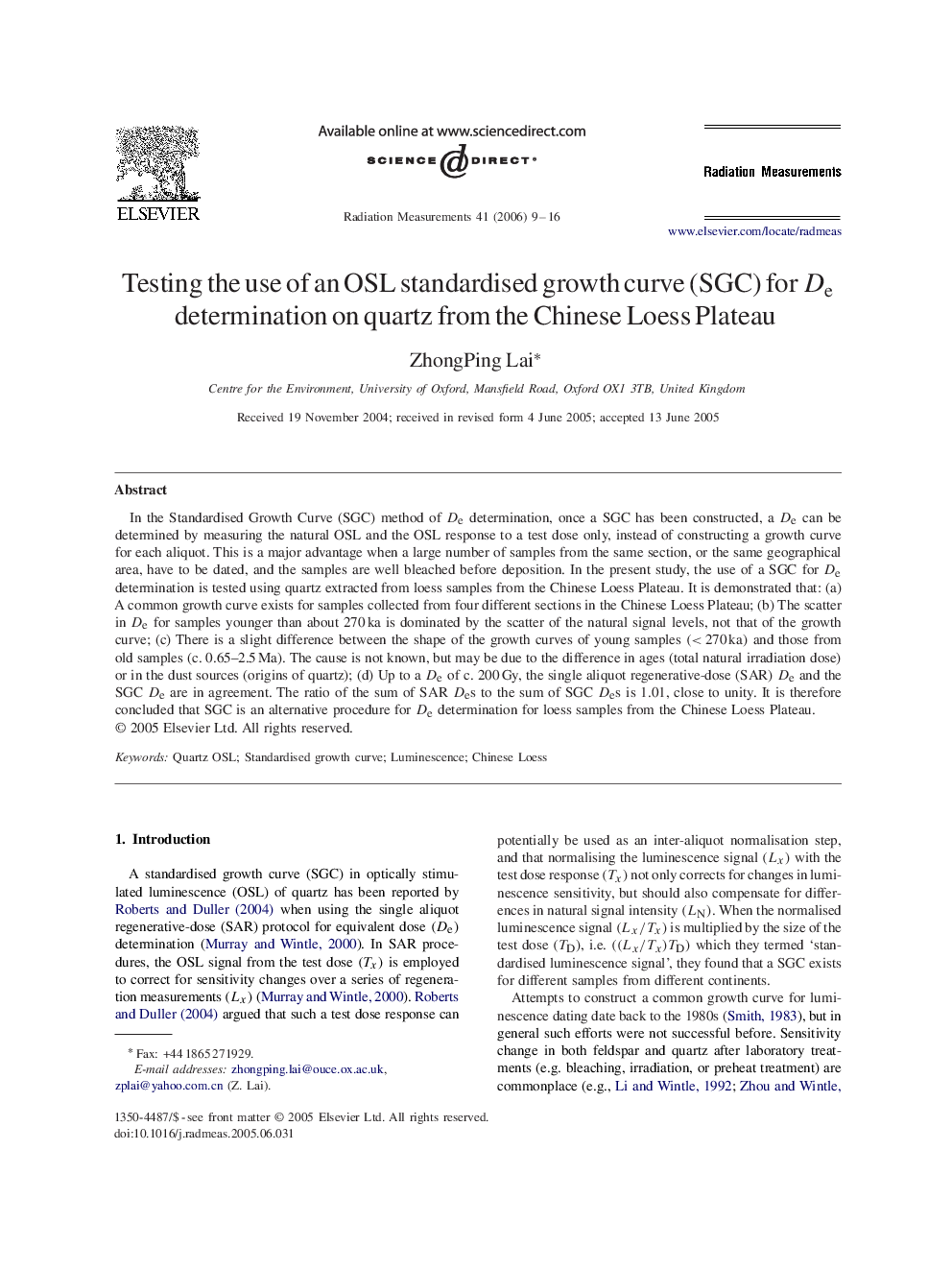| Article ID | Journal | Published Year | Pages | File Type |
|---|---|---|---|---|
| 1884737 | Radiation Measurements | 2006 | 8 Pages |
In the Standardised Growth Curve (SGC) method of DeDe determination, once a SGC has been constructed, a DeDe can be determined by measuring the natural OSL and the OSL response to a test dose only, instead of constructing a growth curve for each aliquot. This is a major advantage when a large number of samples from the same section, or the same geographical area, have to be dated, and the samples are well bleached before deposition. In the present study, the use of a SGC for DeDe determination is tested using quartz extracted from loess samples from the Chinese Loess Plateau. It is demonstrated that: (a) A common growth curve exists for samples collected from four different sections in the Chinese Loess Plateau; (b) The scatter in DeDe for samples younger than about 270 ka is dominated by the scatter of the natural signal levels, not that of the growth curve; (c) There is a slight difference between the shape of the growth curves of young samples (<270ka) and those from old samples (c. 0.65–2.5 Ma). The cause is not known, but may be due to the difference in ages (total natural irradiation dose) or in the dust sources (origins of quartz); (d) Up to a DeDe of c. 200 Gy, the single aliquot regenerative-dose (SAR) DeDe and the SGC DeDe are in agreement. The ratio of the sum of SAR DesDes to the sum of SGC DesDes is 1.01, close to unity. It is therefore concluded that SGC is an alternative procedure for DeDe determination for loess samples from the Chinese Loess Plateau.
